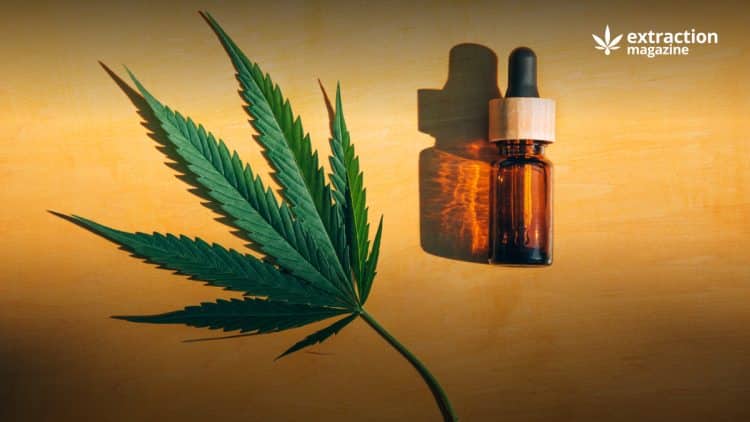Aromatherapy is a natural type of treatment that utilizes essential oils from plants to heal and promote good health. The term “aroma” is used in the name of this treatment because the oils can be inhaled. However, the essential oils used are also often massaged on the skin to target pressure points throughout the body. Essential oils are concentrated plant extracts derived from roots, seeds, leaves, and flowers. The active ingredients determine the use of the oil, such as to promote physical healing or emotional relaxation.Essential oils for aromatherapy have been used for thousands of years. Ancient Chinese, Indian, Greek, and Egyptian cultures have used them for cosmetic, medicinal, spiritual, hygienic, and ritualistic purposes. However, it was only recently that aromatherapy became popular in the U.S.
Role of Essential Oils in Aromatherapy
The molecules responsible for aromas in essential oils are called terpenes. These organic plant chemicals may help keep the body regulated to ward off disease, bacteria, viruses, and fungi.The complex structure, chemical properties, and mechanism of action of essential oils signal the receptor cells in the nose when breathed in. [1] These signals are then transmitted to the limbic and hypothalamus components of the brain through the olfactory bulb. The brain then releases neuro messengers, including serotonin and endorphin, to connect various systems of the body to evoke a desired outcome. Several essential oils are used in aromatherapy to elicit specific outcomes based on various symptoms and ailments.
Common Essential Oils Used in Aromatherapy Treatment
Long used for the purpose of treatment and well-being, aromatherapy is a natural way to target disease symptoms and rejuvenate the whole body, including physically, mentally, and emotionally. Not only can aromatherapy serve as a preventive measure, but it can also be a means of treating acute and chronic ailments. Essential oils play an integral role in aromatherapy, with each type of oil used to elicit a specific outcome. Below a list of some commonly used essential oils in aromatherapy, each bringing its own unique benefits.
Lavender
Lavender belongs to the Lamiaceae plant family native to eastern Africa and the Mediterranean. It has a long history of therapeutic use and may have sedative, calming, anti-depressive, anticonvulsant, and anxiolytic properties. [2] For this reason, lavender may be effective for treating anxiety and depression. It may also be an effective agent to treat pain and tremors. For the purposes of aromatherapy, whole lavender oil and its main components linalool and linalyl acetate are used. While lavender may be administered orally, it is predominantly topically applied to the skin during aromatherapy sessions. Interestingly, lavender oil is often applied undiluted, unlike several other essential oils. Lavender may also possess antibacterial and antifungal properties to fight off several species of bacteria, particularly when antibiotics prove to be ineffective. In fact, one of the first mechanisms that lavender oil showed was its potential ability to heal wounds and abrasions.
Peppermint
Like lavender, peppermint is also a member of the Lamiaceae plant family. Among the hundreds of mints identified, peppermint remains among the most important, along with spearmint. The predominant volatile components of peppermint are menthol and menthone. The phenolic constituents of the plant’s leaves include rosmarinic acid and multiple flavonoids, mainly luteolin, eriocitrin, and hesperidin. [3] Peppermint has been shown to possess potential antimicrobial, anti-inflammatory, antiviral, antioxidant, antitumor, antiseptic, and antiallergenic properties. According to animal studies, peppermint has demonstrated a relaxing effect on gastrointestinal tissue, and anesthetic and analgesic effects in the central and peripheral nervous systems. Some human studies show such potential effects of peppermint on the gastrointestinal tract as well, including its impact on irritable bowel syndrome (IBS) symptoms and pain associated with menstruation.
Tea Tree
Tea tree belongs to the family of Myrtaceae, which is native to tropical and subtropical climates, particularly in Australia. The oil is composed of terpene hydrocarbons and their associated alcohols. Terpinen-4-ol, in particular, has been shown to kill certain viruses, bacteria, and fungi and may even increase the activity of white blood cells to fight foreign substances. [4] The main uses of tea tree oil have focused predominantly on its antiseptic, anti-inflammatory, antifungal, antiviral, and antimicrobial actions. Tea tree oil is often the main active ingredient in several topical products used to treat skin infections. Tea tree oil is also often used in a diffuser as part of an aromatherapy treatment session to naturally support immune system health, fight infections, and calm feelings of stress.
Ylang-Ylang
Ylang-Ylang is part of the Annonaceae plant family, which is native to Madagascar, Philippines, and Indonesia. Many chemical compounds have been isolated from this plant, including monoterpenes, phenylpropanoids, and sesquiterpenes.Studies have shown that this essential oil may have antimicrobial, anti-inflammatory, antibiofilm, antidiabetic, antifertility, and anti-melanogenesis properties. [5] While used extensively mainly in cosmetic and food industries, ylang-ylang may also be useful for therapeutic purposes. As such, it is often used in aromatherapy treatments, particularly to relieve anxiety and depression, improve blood pressure, and regulate heartbeat.
References:
- Ali, B., et al, “Essential oils used in aromatherapy: A systemic review“, Asian Pacific Journal of Tropical Biomedicine, August 2015, Vol. 5, Issue 8, pp. 601-611; Times Cited: 1052; Journal Impact Factor: 1.57.
- Koulivand, P.H., et al, “Lavender and the Nervous System“, Evid Based Complement Alternat Med., March 2013; Times Cited: 429; Journal Impact Factor: 2.65.
- McKay, D.L. & Blumberg, J.B., “A review of the bioactivity and potential health benefits of peppermint tea (Mentha piperita L.)“, Phytother Res., August 2006; 20(8):619-33; Times Cited: 866; Journal Impact Factor: 5.882.
- Carson, C.F., Hammer, K.A., & Riley, T.V., “Melaleuca alternifolia (Tea Tree) Oil: a Review of Antimicrobial and Other Medicinal Properties“, Clin Microbiol Rev., January 2006; 19(1): 50–62; Times Cited: 1578; Journal Impact Factor: 50.13.
- Tan, L.T.H., et al, “Traditional Uses, Phytochemistry, and Bioactivities of Cananga odorata (Ylang-Ylang)“, Evid Based Complement Alternat Med., July 2015; Times Cited: 188; Journal Impact Factor: 2.65.











